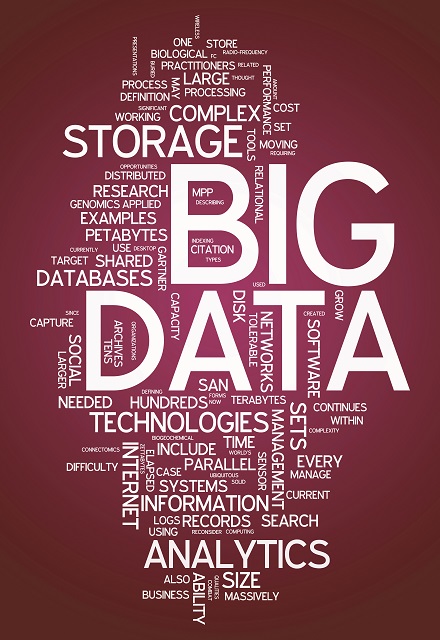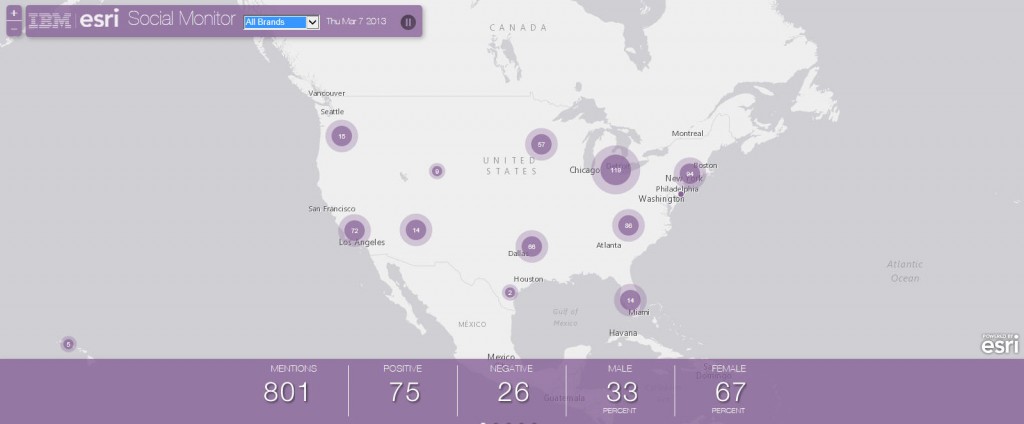Big data is measured by volume, velocity, and variety. My colleague and fellow big data lover Mansour Raad recently highlighted how these three measures themselves are increasing almost exponentially in today’s sensored world while talking at one of the commercial business special interest groups (SIGs) during the Esri User Conference (UC).

Doing Business in the Internet of Everything
We are living in the Internet of Everything (IoE) because of this continuous data stream. In the business world every consumer action can be recorded. The instant an item is pulled from a shelf, we know if you keep that item, or put it back on the shelf, how many items were picked up, and how many were purchased, when, and where. Many stores have sensors in the floors to understand customer walk patterns, promotion effectiveness, linger time, and hotspots.
All this information is fuel for predictive analytics. We are now in the age of learning algorithms which auto-pilot themselves through the oceans of data and parameters in big data and provide insights which companies could not discover in other ways.

Geography Makes Sense of the Barrage of Business Data
One example I came across recently exemplifies how location—the context in which all things are connected based on where they are—is changing business. A retailer is using “feels-like” temperatures to look at different beverage purchasing patterns by geography and segmentation.

Again, to paraphrase Mansour, yes, batch was good—but streams, fed through geographic pattern analysis, and the ability to learn in real-time, is more important. Are you ready for the wave of big data to redirect your business?
insider